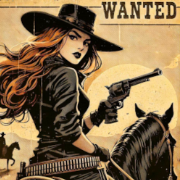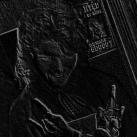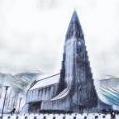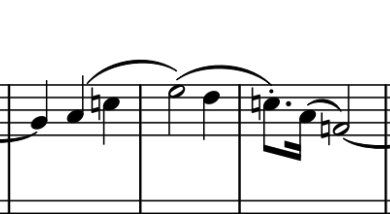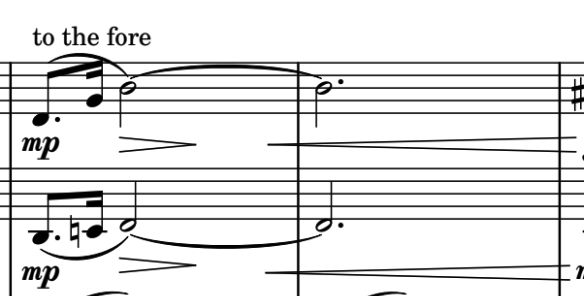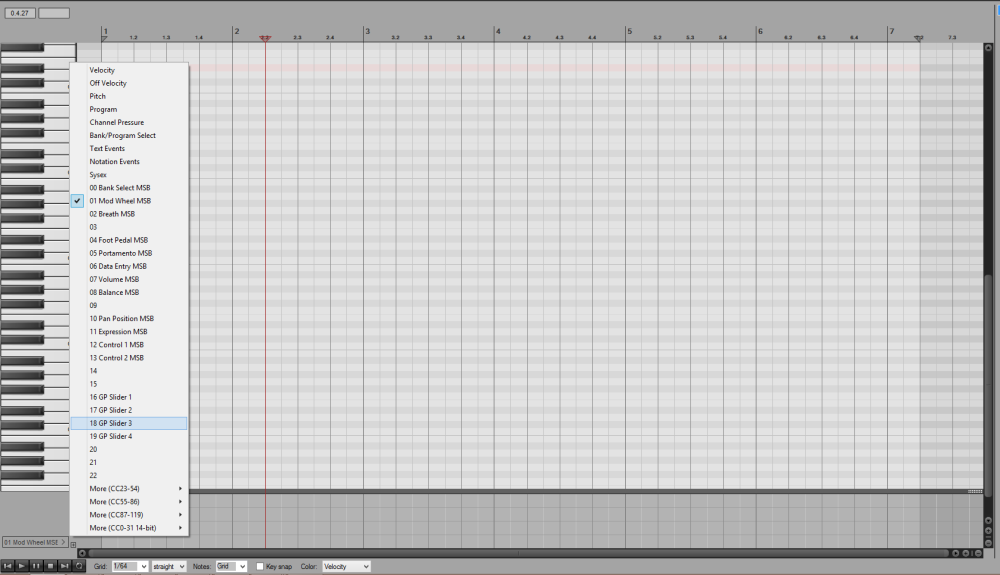Leaderboard
Popular Content
Showing content with the highest reputation on 07/01/2022 in all areas
-
2 points
-
Hello! I've been busy trying to complete some old pieces in between the new compositions I submit on here. So this is a piece I started a long time ago but only now managed to finish (although I fussed around with the ending quite a bit until I felt I had gotten it right). This is a rondo form which goes through like, four iterations of both a slow and a fast theme (the cellos' eponymous "arco ostinato") - both of which I intended to be based around basically the same melodic material. Each new iteration has a few new details added here and there and the slow parts are always in a different tonality so hopefully it doesn't bore you! The original idea behind the piece was to write a piece using quartal harmonies that nonetheless stays tonal and mostly triadic. Let me know what you think! The rendition is done with Musescore since I don't yet have any solo strings VST's. Thanks for listening!1 point
-
Hi, this is a new music that I've been working on for almost one year O.o I think it's my first serious work and I hope you enjoy listening to it. I would appreciate it if you could give me some feedback about this work. Thanks 😄1 point
-
Such an interesting piece, and very effectively arranged for string quartet, I might add! The harmonic texture here was richly quartal — so much so, in fact, that I would consider doing away with key signatures in this piece. With so many accidentals already, having to remember which notes are sharped or flatted based on an arbitrary key doesn't help your performers. I also noticed that you stuck mostly with p4/p4 chords. Nothing wrong with that as it provides a nice consonance while preserving that quartal 'edge' and, I believe, worked well here. You might, however, think about exploring the sounds of other quartal/quintal species, particularly those with aug4/dim5 intervals. That's one of the beauties of quartal harmony: the ability to expand or retract harmonic dissonance by tinkering with the interval of the 4th. Which brings me to my next point of consideration. If you're going to use quartal harmonies, it might be useful to plan out your harmonic progressions. Quartals in any given key inherently do away with the triadic degrees of the key, and thus there won't be harmonic cadences. Musical phrasing must be achieved via other methods (which you pulled off quite well in this piece) and yet, by the same token, moving from one tonal center to the next becomes far more fluid. It's easy to get lost when using quartal harmonies; hence, a tonal 'map' tends to help out a great deal. (Not saying your piece suffered from this. Just wanted to provide a bit of advice in case you weren't aware.) From a notation perspective, there were a couple of things to look at. First, slurs. Take a look at this one from the 1st violin at mm. 52-54: The way this is notated, it would appear you really just want one big slur from that A to the final F. I assume you meant for the bowing to stop at the E and resume at the D, but that's not the way it's notated. There are also issues of competing ties and slurs, as in these bars: It's conventional to extend the slur to the end of the tied note, provides a cleaner look. Someone correct me if I'm wrong... I seem to recall that that convention is dying away. Lastly, there is the issue of unprovided dynamics between hairpin swells, as below (and above also, incidentally): It's implied that the start of that C will be at the previously supplied dynamic, which is fine. The A-sharp will be played forte, which is also fine. But what about in between, where the closing and opening hairpins meet? Just a quick p or mp is all it takes, and it will mean the world to your performers. Okay, I think that's enough for now. This is a marvelous piece and I'm glad you shared it with us! Keep up the good work!1 point
-
I have zero experience of quartal or polytonal harmony and I listen to little music that incorporates it, especially in its entirety as you claim. Even so, I am nonetheless enchanted by the 'disturbances' that you have captured. I feel that this music is more relatable to the human experience over which the urge to sugar coat with niceties and artificial unity are resisted. Thank you for sharing... it has been enlightening 😉1 point
-
What to say! This is an idiom more or less alien to me so I won't have much constructive criticism coming. I can say that the 'piece' is entertaining and comical in places, particularly the glissando's, which perhaps due to the playback quality sound rather cheesy! But that adds a nice affect and I think is intentional on your part. I enjoyed the contrast you provide between the ostinato sections and with the slower ones. The mood that I am feeling from the music seems rather akin to one's experience of bipolar personality disorder! Thank you for sharing and brightening my morning1 point
-
Quite melancholy yet hopeful at the same time! You keep things fresh and tuneful - there isn't a dull moment in your writing. I wish I could read some sheet music along with this piece because it seems like you visit many tonalities and are quite adventurous harmonically - it would be interesting to see. Thanks for sharing!1 point
-
Quite a hopeless, dreary and apathetic gesture. It reminds me of Final Fantasy VI music when the empire would be up to no good this kind of music would always embody it's oppressiveness. Thanks for sharing!1 point
-
I like the beginning, the recording (is it a recording or is it digitally interpreted?) has a very good bass and I overall enjoyed the entire piece but I wanted more of it. Thank you for sharing and welcome to this forum!1 point
-
Welcome to the world of samples! BBCSO Discover is awful, even if free just FYI! However! You can change the dynamics with the modwheel, which is MIDI CC1. If you don't own a MIDI controller, I really, really recommend you get a controller keyboard, one with a few faders on it (I recommend the oxygen pro and pro mini) as playing in the notes and controller information live always yields much better results than MIDI import. That being said, you can still draw in the dynamics with the mouse. Double click on a MIDI item on the timeline, and in the bottom left, you will see a dropdown menu that will say "velocity" by default and you can adjust the velocity parameters here manually. Click that menu, and you will see "01 Modwheel MSB" as an option. Click it and set the snap/grid to at least 64th notes. Then, in the blank area where the velocity sliders were previously, you'll find that you can draw in modwheel data if you hold down left click. The closer you go to the top, the louder it will be. However, why BBCSCO Discover sucks, is that it only contains 1 dynamic layer per note. So there are no more recordings of actual louder and quieter dynamics as there should be, and as a result this does nothing more than increase the volume of the individual sample as per Discover's scripting. =/ Also, just so you know, MIDI CC 11 is called "Expression" which normally controls the channel volume of the virtual instrument. A handy trick if you get samples with more recordings, is to use both MIDI CC 1 AND 11 at the same time to control dynamics. Many find it helps add a bit more range to the samples as many libraries struggle with el niente and therefore can suffer from hard stops and starts. I personally use the modwheel (always midi cc1 by default) and the fader next to it on my keyboard mapped to cc11. I have another fader mapped to CC2, which controls vibrato in many libraries. Anymore questions about samples, making mockups and Reaper — you know where to find me. I've been using sample libraries for decades, and Reaper since about 2012 or so.1 point
-
Hi Markus, thanks for sharing. Very nice binary form. I like the imitation interplay within the parts. From the first listen I could also identify some of the galant schemas. I have heard a Monte-Romanesca in the first part, a fifht cycle, the falling third harmony before the repetition and also a Prinner in the second part. I will relisten later and have a closer look to the score. But overall really enjoyable piece as always. Looking forward to your suite 🙂Regards!1 point
-
Nice job! It really is quite fun! I think it's quite a crisp rendition despite the heavy reverb (although I had to open the score to really see what was happening and feel like I was also hearing everything). There are a few loose ends although that might be just my taste. Like at meas. 94 the oboe line seems to suddenly peter out. Also, it seems strange to start the piece out with the bassoon and harpsichord but no oboe, although I think in the second half (after the repeat) you make up for that by giving the main idea to the oboe which is really quite nice. The transition at meas. 90 seemed a bit contrived to me - did you by chance splice two disparate parts of your piece together there? Btw - I really enjoyed your visits to minor keys like at meas. 81 (C minor) and 85 (G minor). Thanks for sharing!1 point

.thumb.png.8b5b433a341551e913a34392660bc95b.png)
